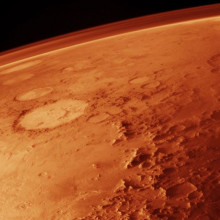This week we speak with NASA's Planetary Protection Officer to find out if we could, and should, introduce life onto Mars. Plus we ask is a human producing Vitamin D a bit like a photosynthesising plant?.....
In this episode

00:00 - Could we Introduce Life to Mars?
Could we Introduce Life to Mars?
We put this question to Catharine Conley, NASA's Planetary Protection Officer... Catharine - Firstly, we know that there's life on Earth that could survive in similar environments on Mars. There are organisms that live deep beneath the surfaces of South Africa that live on the radioactive decay of the rocks around them. If they were put in a similar location on Mars, they would certainly be able to survive there. There are also lichens and other organisms that at least can survive and many of the aspects of the environment of Mars that we can mimic in labs on Earth.
People have done studies to try and understand how long it would take and what do you need to do to terraform life on Mars. First, you would need to warm up the planet a little bit and then you would introduce organisms that could change the atmosphere, photosynthetic organisms that would breakdown the carbon dioxide and turn it into oxygen so that humans might be able to live there. That process would take about 100,000 years. So, it is possible certainly to terraform Mars. We have organisms on Earth that could probably live there with only a small amount of tweaking.
Hannah - So yes, modelling predicts that we could terraform Mars with life from Earth. But do we want to terraform it? Back to Cassie, whose job it is to protect our planets.
Catharine - My job as Planetary Protection Officer is to make sure that NASA does not contaminate Mars with life from Earth. Because we want to study life that might be already on Mars, we don't want to introduce life until we have a chance to study what's already there. This is specified in the outer space treaty. Article 9 says that we will not cause harmful contamination of other locations or adverse changes to the environment of the Earth as we explore extra-terrestrial locations. And it's also a good idea from agency policy because the reason we're going to Mars is to look for life. And it's easy to find life on Mars. All you need to do is bring it with you.
Related Content
- Previous Saccharin: Chemistry in its element
- Next Mars Curiosity Extra










Comments
Add a comment